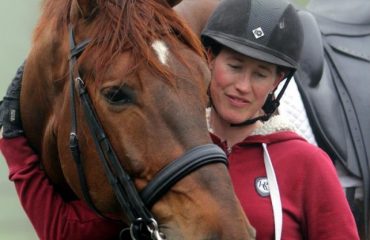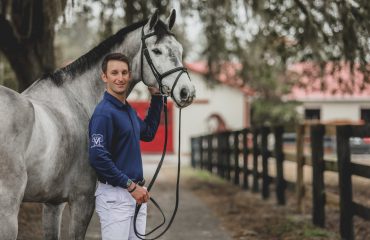By Liz Halliday-Sharp
I have always believed that the best riders are those who continue to learn, work hard and constantly strive to be better. I personally am trying to improve my riding every day, and I’m lucky to have some great trainers around me. However, most of the time I’m at home working through things on my own, and that’s the time for personal assessment and focusing on homework from your coaching sessions.
Over the years I have enjoyed teaching lessons at home and in multiple clinics, and I wanted to share some of my top training tips that seem to have helped riders the most.
1 – Use your legs more. I always encourage riders to relax their knee and thigh and to “hug” the horse with their lower legs. This is relevant in both dressage and jumping, and not only does it mean that the leg is on and can then be more effective, but it also means you’re not adding tension by gripping with the knee and thigh. Many times the horse feels behind the leg and stuffy because the rider is in fact holding on with the upper leg and not using the lower leg. This creates the same effect as if you’re pulling the hand brake in your car while trying to push on the gas pedal!
2 – Praise matters! I’m a big believer in black and white training for horses. I ask them to work hard, but I’m always open with the praise when they do things well. I often see riders ask a lot of their horses, but never give them a quick pat or a word of encouragement. How can we expect our horses to know what’s right and wrong if we never tell them? This is especially important when horses are struggling to learn something new or finding something hard. It’s OK if they find it tough, but we must be quick to offer praise when they do it right, even if it’s correct for just a moment.
3 – Contact and connection. I think these two things are very important to success for any rider. One thing that I often say in a lesson is to “soften the horse within a feel,” and by this I mean that you should have a connection to the mouth so that there’s something in your hands, and then you can soften the horse with your fingers by squeezing on the reins, but still maintain some contact. The leg is also an important part of this to maintain the energy from the hind legs, and this in turn will ultimately teach the horse to take weight behind and push. I don’t believe that any horse can push correctly from the hind leg into a loopy rein with no contact, so to help the horse be on the bit and connected, we must strive to develop a nice, consistent feel of the mouth that maintains some elasticity.
4 – Power does not equal speed. Anyone who has been in lessons or clinics with me has probably heard this before! This is especially true in the show jumping phase where many riders think that speed is the answer to tackling a course that they find challenging. Most of the time I find that focusing on the hind legs and generating more power and compression rather than letting the horse get long, flat and fast makes a big difference to the confidence of both horse and rider.
5 – Keep your shoulders back until the front legs have left the floor. This is very important on cross-country and is essential for corners, skinnies and angles. Riders get into trouble when they believe the jump is going to work and so they tip forward, release the rein and take their leg off on the last stride. When this happens, the horse loses the connection and the confidence from the rider and it “opens the door” for a run-out. When the rider stays locked in, strong in their core with a solid lower leg and their shoulders back, it helps to keep the horse focused and committed to the questions in front of them.
6 – Pull your chin up when jumping. This sounds like the silliest little thing, but sometimes makes the biggest difference! I say to many riders to try and pull their chin up on take-off, in the air and on landing. This then raises the eye level and the balance and can make a big difference, especially for those that are struggling in combinations because they’re feeling disorganized on landing.
With hard work and focus we can all keep getting better—good luck!
Photo by The West Equestrian, thewestequestrian.com












